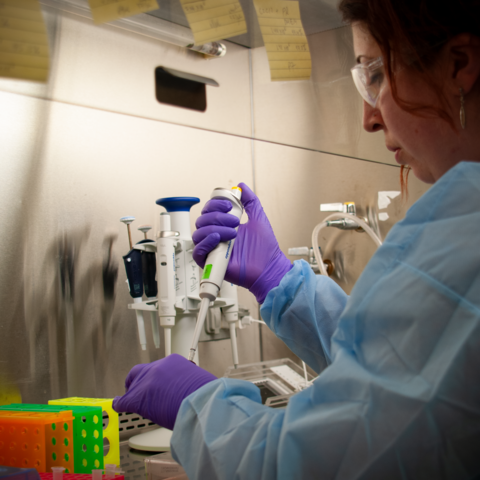
Meet Greta Babakhanova, a postdoctoral researcher here at NIST with boundless drive and a passion for reducing human suffering. It’s an ambitious goal that, for her, spans multiple chapters of her professional life and means entering the fast-growing fields of tissue engineering and regenerative medicine.
Chapter I: Human cells don’t grow randomly (aka Greta’s academic adventure).
Scientists need to grow cells with structures like the frames (or scaffolds) that you might see around buildings under construction. In her Ph.D. at Kent State University, Greta worked with liquid crystals (a state of matter between a liquid and a solid) to create a coating for those scaffolds that she could dynamically control with temperature and light. With those stimuli, the molecules in the liquid crystal coating aligned in whatever direction Greta wanted, creating surface patterns that particles or biological cells could adhere to and grow on.
Chapter II: Human cells don’t grow alone (aka Greta’s NIST experience).
In common practices for counting cells, scientists examine samples of cells that float freely and unattached in a liquid, unlike in reality, where they come together into a 3D structure and shape. Researchers also often use toxic dyes for labeling live and dead cells. These dyes kill the cells and essentially end the experiment. Greta joined a team at NIST in the midst of developing a new technique to count and identify living cells in 3D scaffolds. With help from optical imaging equipment from the U.S. Food and Drug Administration, she and her team are up for the challenge of finding ways to bypass those obstacles.
Chapter III: TBD (aka the future awaits).
Scientists can combine cells and the scaffolds they grow on into structures that can repair or restore damaged or lost tissue or organs in patients. That’s where translational research — taking advances out of the lab and into clinical studies — comes into play, and that’s where Greta is headed next. One day, she hopes to apply her experience with 3D scaffolds at NIST to the clinical field, using a toolbox of biomaterials like the liquid crystals from her Ph.D. days.
Follow us on social media for more like this from all across NIST!

